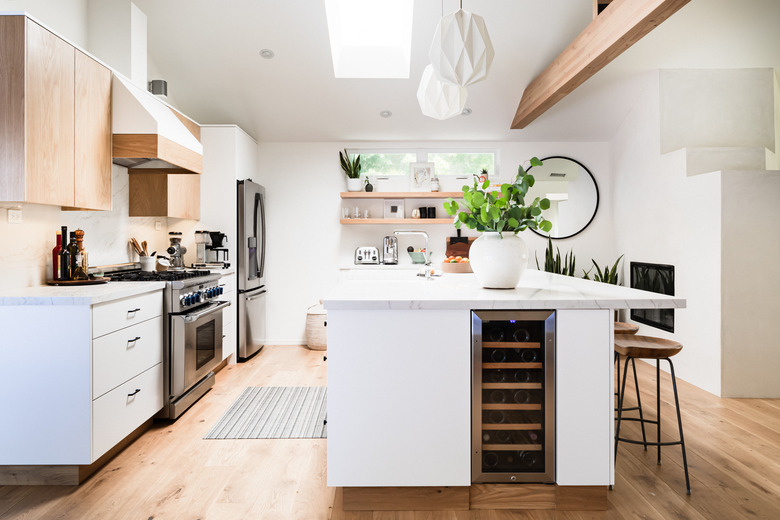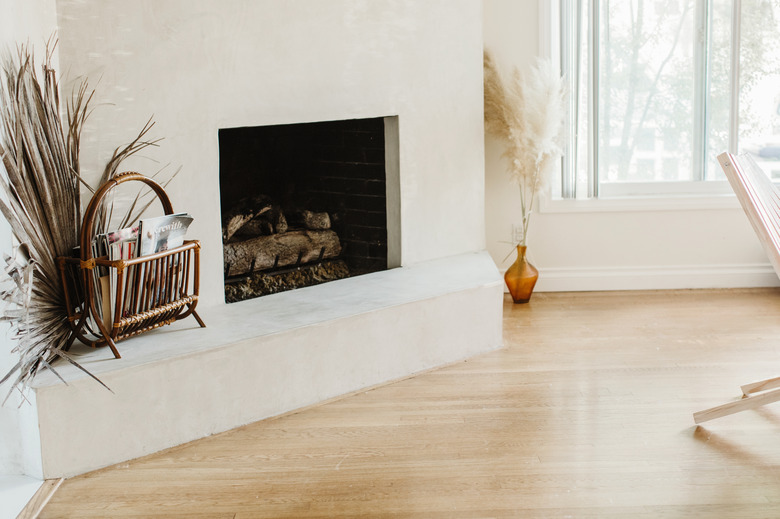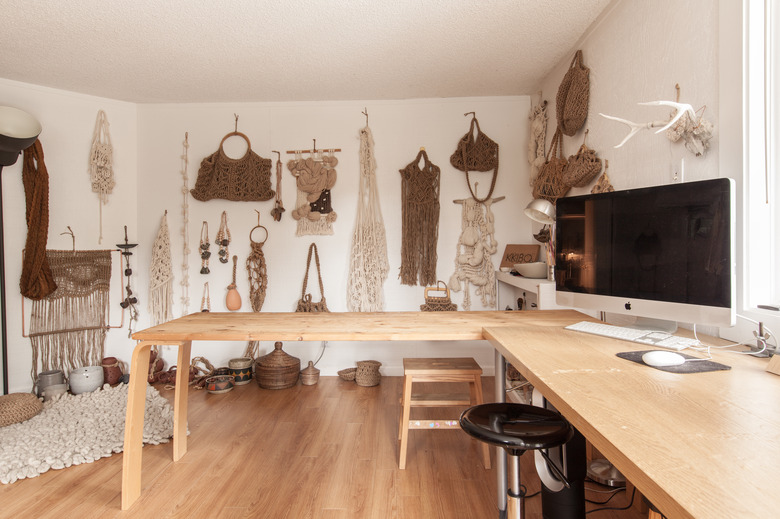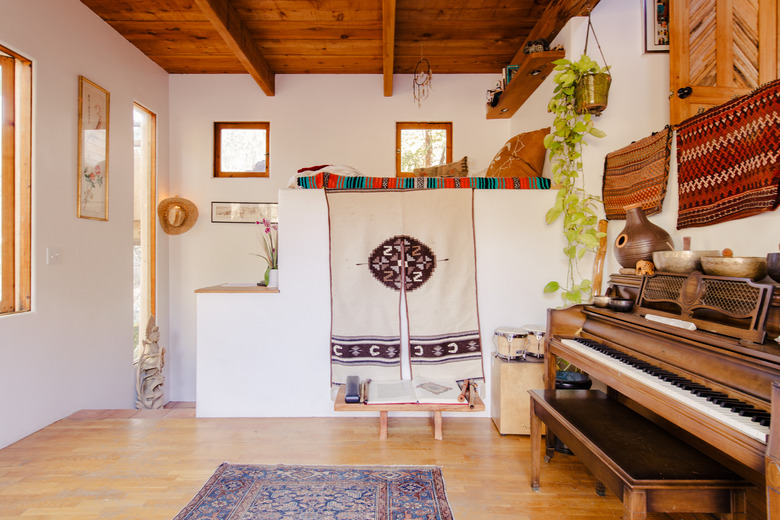Oak Floor: A Homeowner's Flooring Guide
If you've noticed the wavy grain and swirling pattern beneath your feet before and dismissed it merely as "hardwood," you wouldn't be entirely wrong. More specifically, however, that hardwood floor with the distinctive look was most likely white oak, which is one of the most popular types of wood used as hardwood flooring in homes.
Oak wood flooring comes with a number of benefits, including durability and affordability, when compared to other types of solid hardwood. A few important things to keep in mind if you're considering adding oak floors to your home are the different types of oak, the various cuts and sizes, the installation costs associated with oak floors and what rooms you're looking to renovate using this type of wood
What Is Oak Flooring?
Oak flooring is a type of solid hardwood flooring that is found in homes, especially in high-traffic areas of the house like living rooms and hallways. Although it's not quite as hard as exotic hardwoods like Brazilian walnut and tigerwood, it is considered a high-quality flooring option that's much tougher than softwood flooring varieties like pine and fir.
Because it is one of the more durable hardwood flooring options available, it is more expensive than softwood, sometimes costing up to twice what pine flooring would cost. Like other hardwoods, however, oak flooring can last over 100 years and is easy to repair by sanding down scuffs and scratches. Oak hardwood is one of the most popular types of solid hardwood flooring and is considered a best-seller for its attractive and classic look, affordable price point and long-term durability.
Types of Oak Hardwood
The two common types of oak flooring are white oak and red oak. The former offers a more brown or golden tone, while the latter is slightly lighter in color and gives off an almost pinkish hue. The graining seen in red oak flooring is a bit more distinctive and easy to spot than that of white oak, which gives it a bit of a more traditional look than white oak floor boards. Because of its grainy pattern, red oak tends to hide dents and dings a bit better than white oak hardwood flooring, even though it is technically the softer of the two.
While they are both still considered to be solid wood types, white oak flooring is a bit harder and more durable than red oak flooring. How do we know this? Every type of flooring ranks somewhere on the Janka hardness scale, which measures the amount of pounds-force it takes for a steel ball to embed itself in the surface of the floor. According to the Wood Database, the white oak received a rating of 1,360, a bit more than red oak, which is rated slightly lower at 1,290.
Types of Planks
As with any type of wood flooring, planks are sold either as finished or unfinished, and the type for which you opt will depend entirely upon your preference. Prefinished wood is ready to walk on as soon as it's installed and requires no drying time or noxious odors with which to contend, which can sometimes come with applying a finish like polyurethane. Pre-applied finishes also come with a generous warranty, with many brands offering a lifetime offer on an already durable finish and stable product.
Most attractive to many people, however, is the price. While prefinished boards do cost a bit more up front, the total cost ends up being less than it would cost to finish untreated flooring with the help of a pro. As far as quality goes, clear grade and select and better are the top varieties of prefinished wood, offering uniformity throughout each plank. Lower-ranking planks include traditional, antique and character grades, which may reveal more flaws like pinholes and knots.
Alternatively, some people opt for untreated wood so they can choose the stain they want, be that a specific color, matte or high-gloss finish. Additionally, unfinished flooring has no bevels in between where the floor boards meet up by the time everything is installed, which offers a smooth, flat surface — a perk that prefinished flooring can't offer.
Hardwood Plank Sizes
The size of the oak wood planks you choose is ultimately up to you, although some are better suited for certain spaces and design goals than others. Narrow planks tend to offer much more stability in humid circumstances than a wide plank, so if you live in a humid region of the country or if you're looking to install oak flooring in a more humid room, narrow might be the way to go.
Narrow planks also tend to make smaller spaces look and feel a bit larger. Many people also find that the narrow width offers a more modern aesthetic, which is something to keep in mind if that aligns with additional design elements of a particular room. The standard measurement of narrow planks is between 2 and 4 inches wide.
Wide planks are considered any plank that measures above 5 inches in width, and they can reach up to 12 inches wide. This type of flooring is celebrated for its traditional, sometimes rustic look and offers homeowners more visibility of the wood's grain. While wide planks are more expensive than narrow planks, they do take less time to install since there are fewer planks needed to cover a specific area, which also means fewer visible seams between boards.
Thickness and Grain Varieties
The standard thickness of all solid hardwood flooring, including oak, is 3/4-inch thick. This is considered the best size for maintaining long-lasting wood floors in your home, as it's great at holding up to regular foot traffic in the household and can be sanded if you wish to remove any scrapes from the surface of your floor. The thicker the plank, the better it holds up to damage like warping, which can happen when hardwood is exposed to moisture and humidity over time. While this size is the most common thickness used in hardwood floors, some planks measure as thin as 5/16 inch.
You might notice that certain types of hardwood look a little different, even if they are made of the same wood species. This is due in part to the wood's grading and its type of cut. Hardwood is classified in three grades:
- Select grade: This type of plank has very few if any visible defects, like knots. The term "defects" does not mean that the wood has been compromised or is objectively worse than less-defective cuts; it simply means that marks are visible.
- Natural grade: This is a mid-grade type of flooring that has some visible defects.
- Rustic grade: Rustic planks of wood are said to have lots of character for their look, thanks to the various defects that make each piece unique. Rustic cuts of wood are becoming more popular as of late and are the cheapest of the hardwood grades.
Additionally, the type of cut will also impact the look of your oak wood flooring. The two types of cuts are flat sawn and quarter sawn. A flat-sawn piece of wood shows the growth rings from a parallel perspective, while quarter-sawn cuts hide the rings and offer a straight grain. Quarter-sawn cuts are more expensive than flat-sawn varieties.
How Much Does it Cost?
A 2019 recap from HomeAdvisor states that the average hardwood flooring renovation in the United States costs around $4,500. Oak planks fell in the mid-range pricing group, which measured an average price of around $5 to $10 per square foot of materials. That price will, of course, depend on your local retailer, whether the planks are pretreated or untreated and the size of your planks.
Average homeowners will likely look to a professional service to install their wood flooring for them, which will also increase the cost of the home improvement project. Generally speaking, it's safe to assume that you should add somewhere around another $4 to $8 per square foot of oak wood flooring installed to cover the cost of labor, although this will vary depending on the company you choose.
Installing Oak Flooring
While many will look to a professional installer to add oak wood flooring to their homes, some may take the do-it-yourself approach, which can certainly be done with the right tools, planning and know-how.
Solid hardwood cannot be glued down and must be nailed to a stable subfloor, which can include existing hardwood flooring. To check if your subfloor is suitable for applying hardwood, use a leveling tool to make sure there are no dips or declines. Solid hardwood is manufactured as tongue-and-groove planks, with the tongue from one side of a plank sliding into the groove of the adjacent plank to create a smooth, solid surface.
The Best Uses for Oak
Because oak is a solid hardwood, it tends to hold up to wear and tear better than some other flooring surfaces and makes a great addition to high-traffic rooms, like the living room, or in hallways.
If you're hoping to enjoy the look of oak wood flooring in a room that either doesn't have a sturdy subfloor or tends to endure moisture or humidity on a regular basis, like a bathroom or kitchen, engineered wood may be a good option for you. Unlike solid wood, which is comprised entirely of the type of wood with which you're working, engineered wood is made of layered wood pieces. A top layer of wood veneer — in this case, oak — will give engineered oak wood that favorable look, but the interior is made of plywood. High-quality engineered wood is made of many layers, usually between five and 12, and can last up to 80 years with regular cleaning and maintenance.
References
- The Wood Database: Janka Hardness
- Macon Hardwood: Red Oak vs. White Oak
- Floor Critics: Pros & Cons of Oak Flooring vs. Maple & Hickory Flooring
- HomeAdvisor: How Much Does Hardwood Flooring Cost?
- Oak & Broad: Wide Plank Hardwood Flooring and Narrow Plank Flooring... What's the Difference?
- Hosking Hardwood: Solid Hardwood Flooring
- Easiklip: 5 Proven Hardwood Flooring Thickness Chart & Categories



